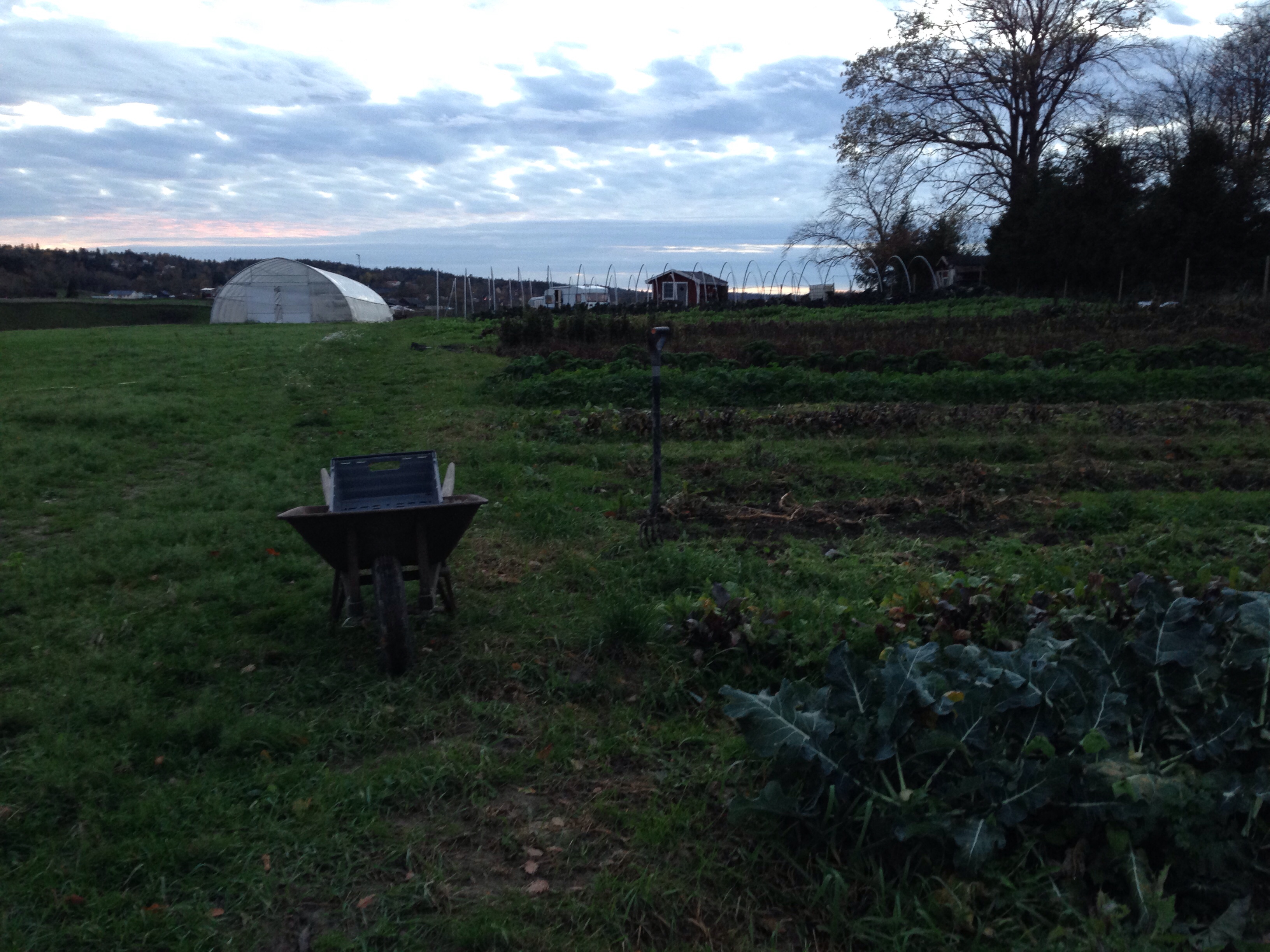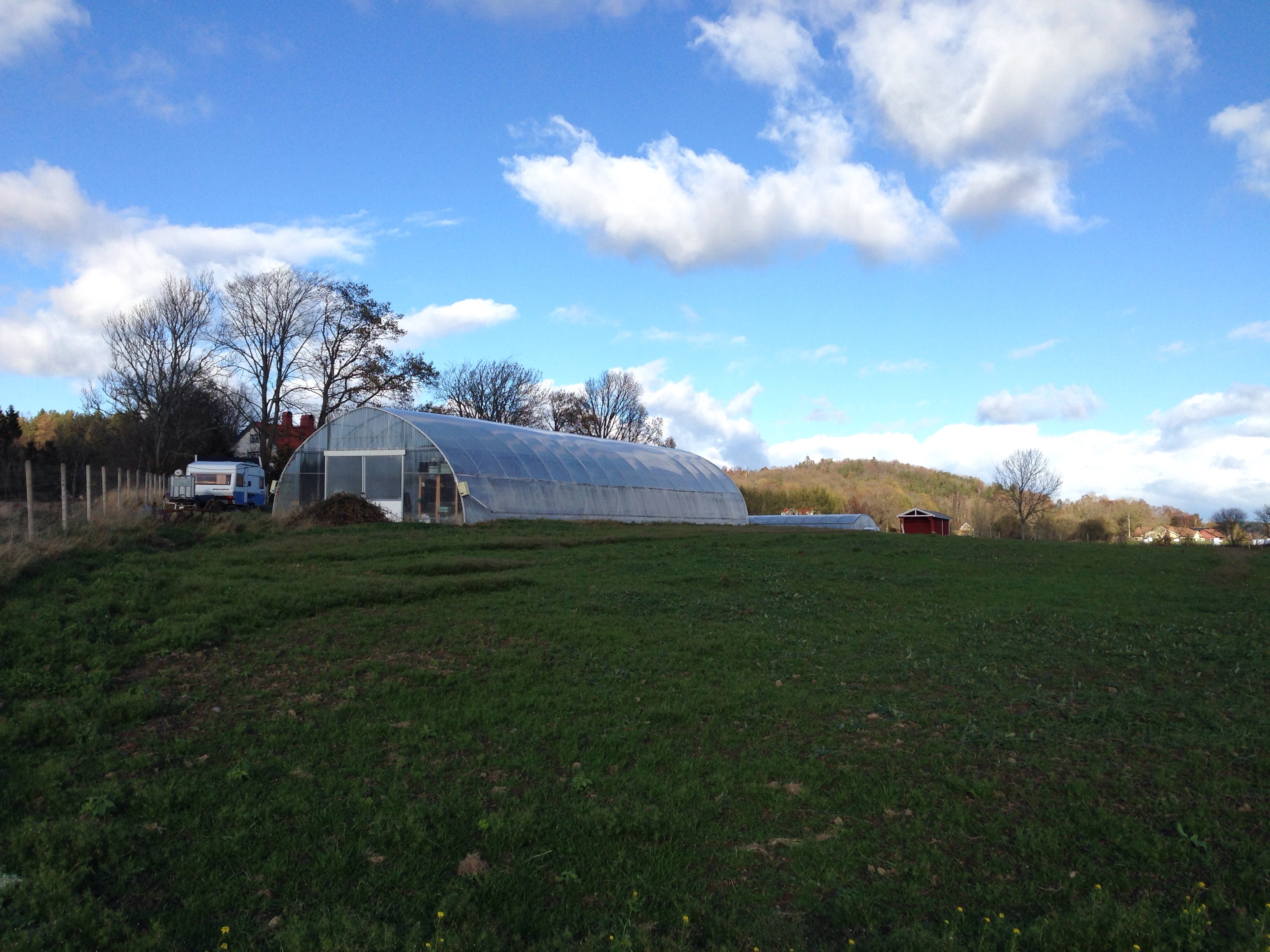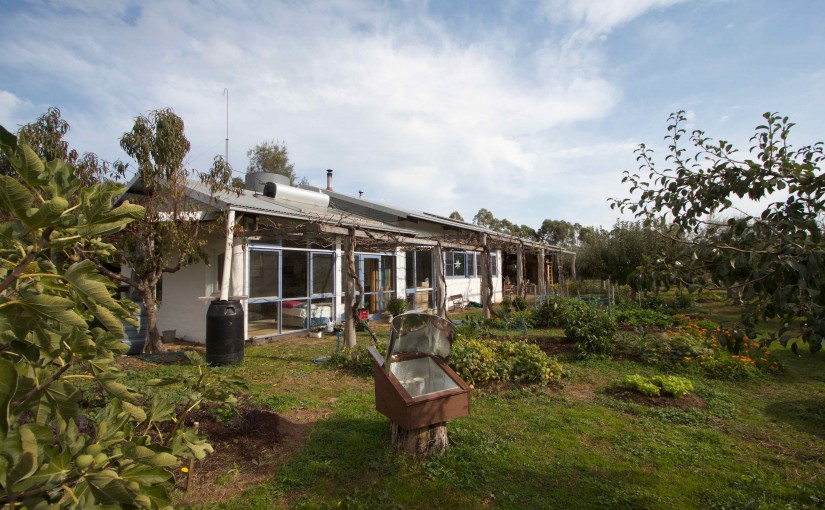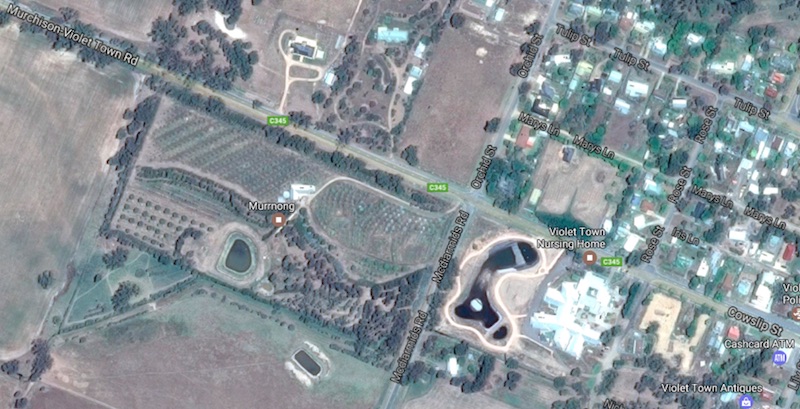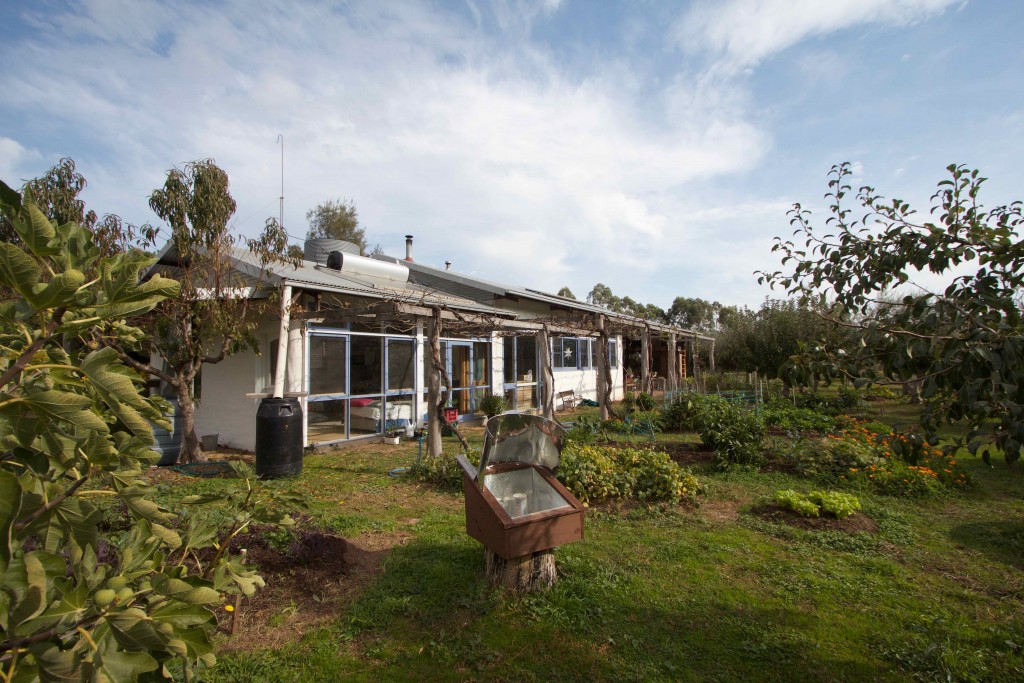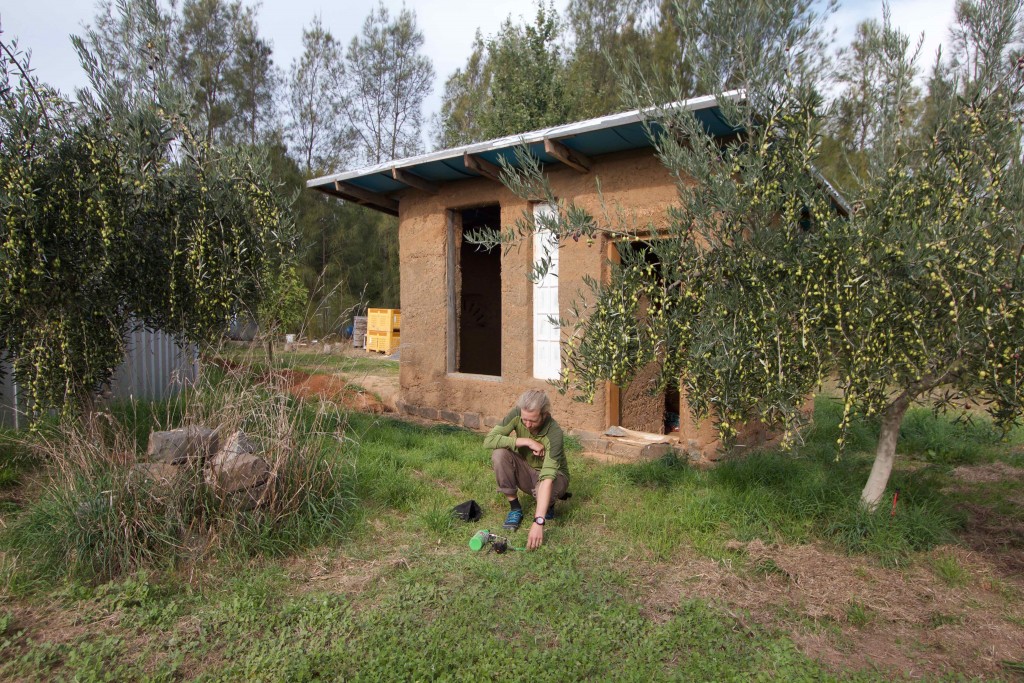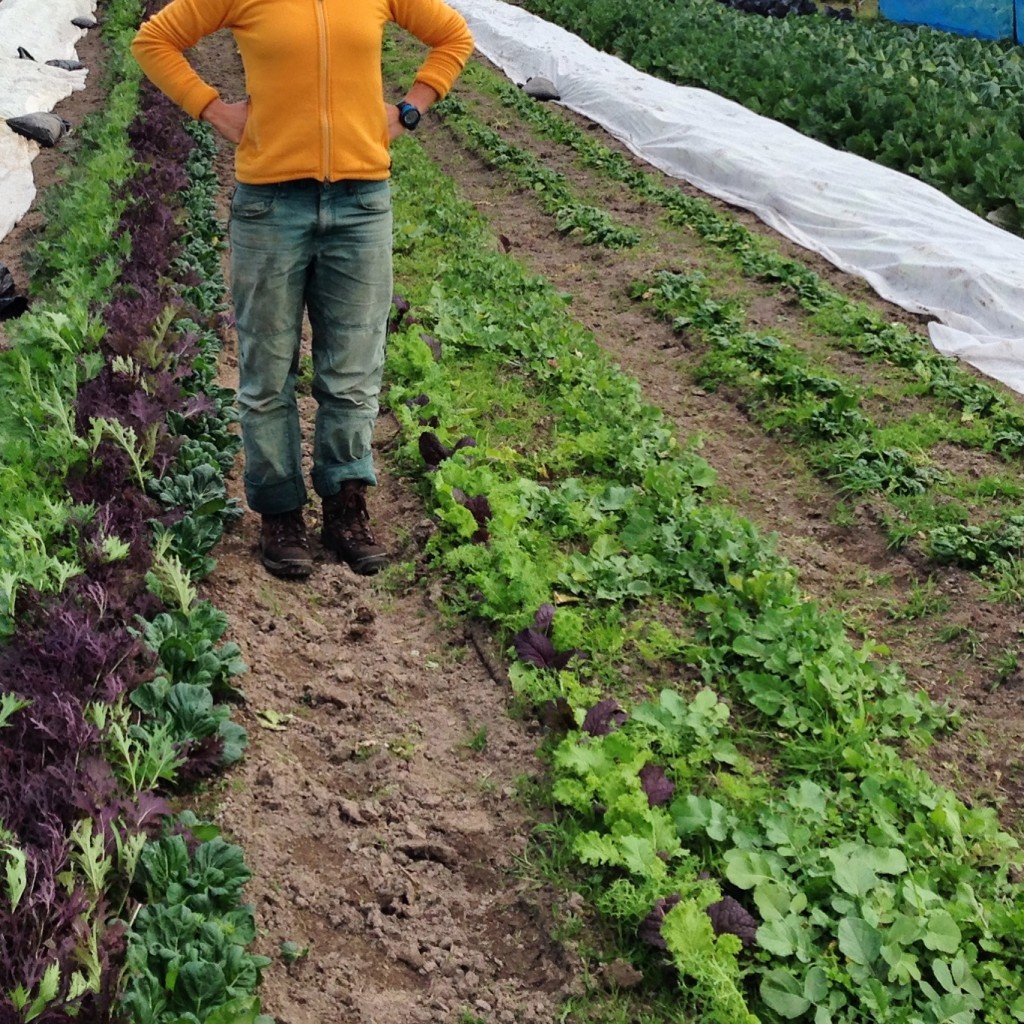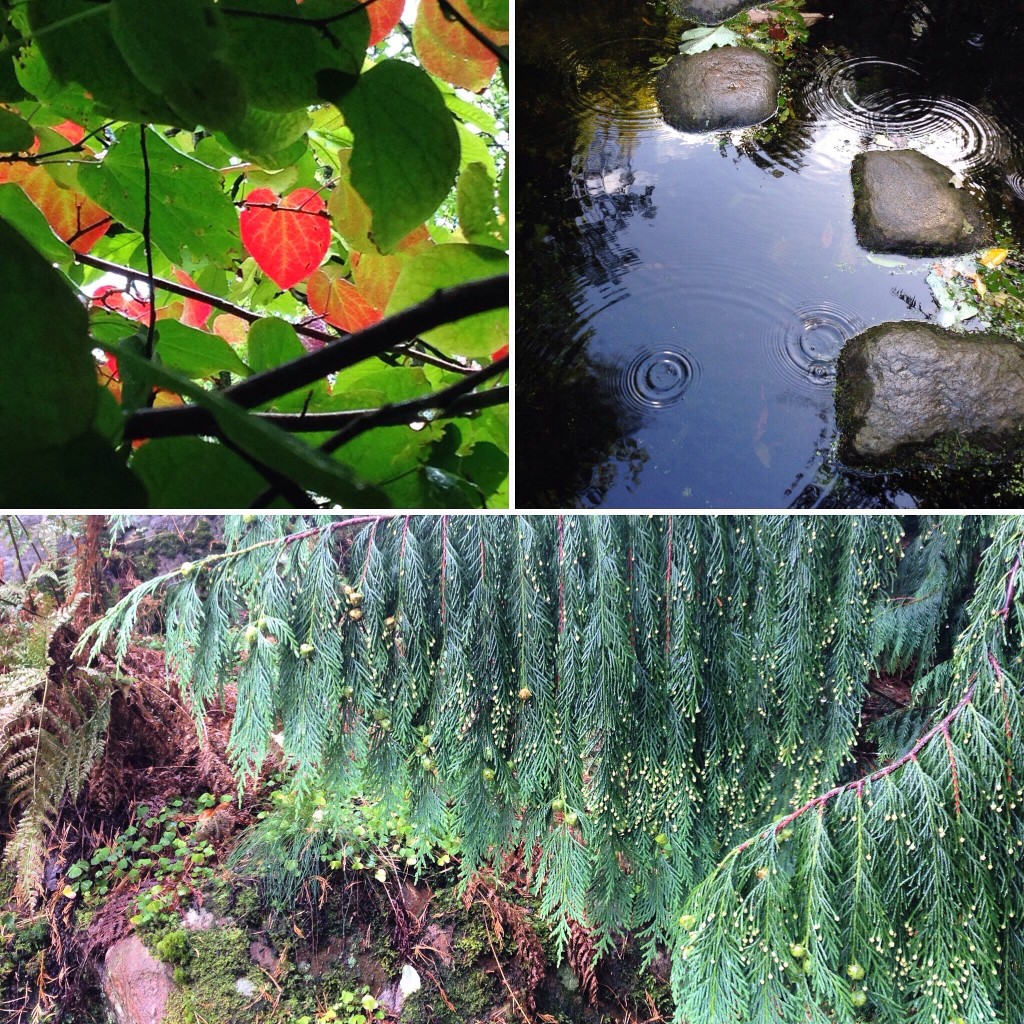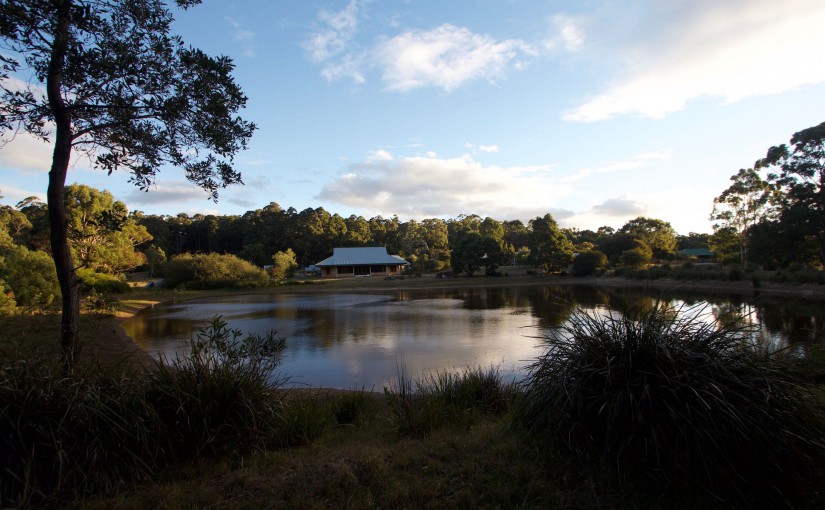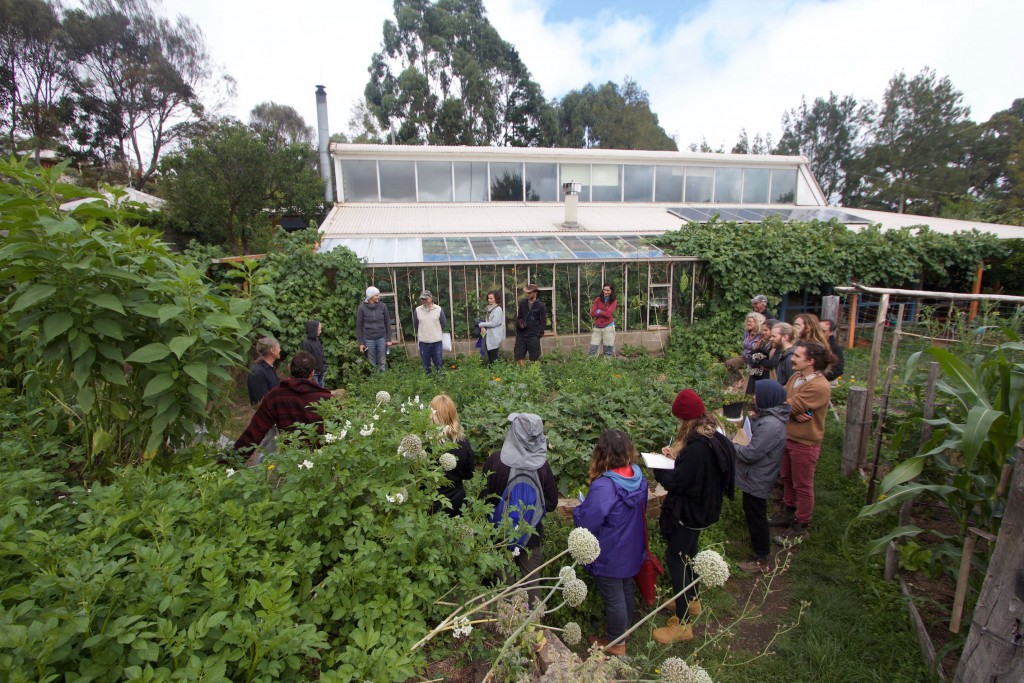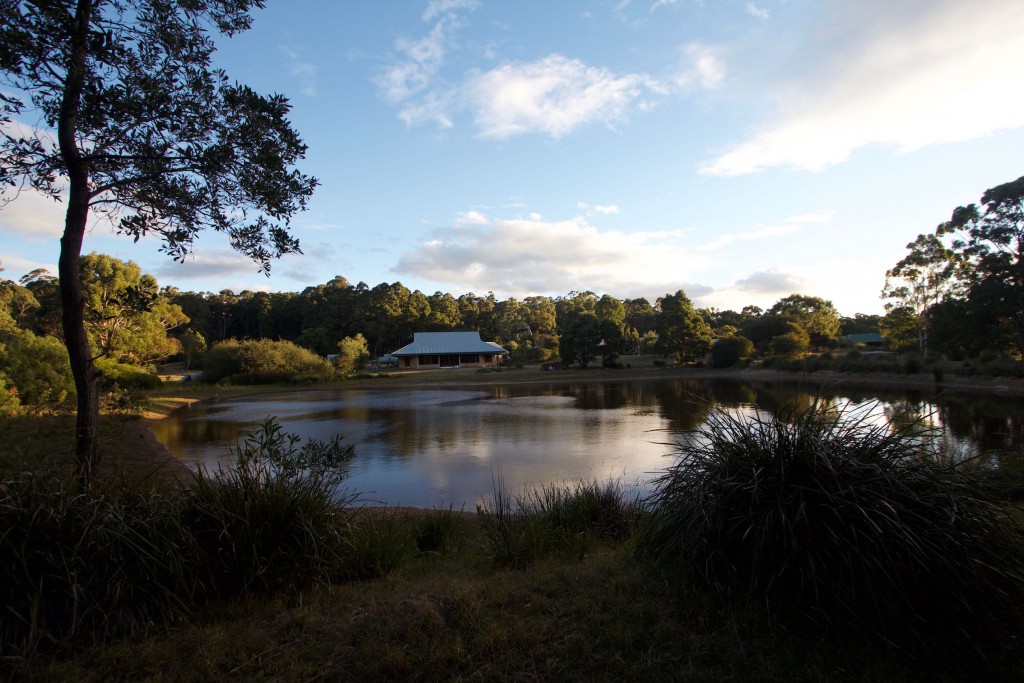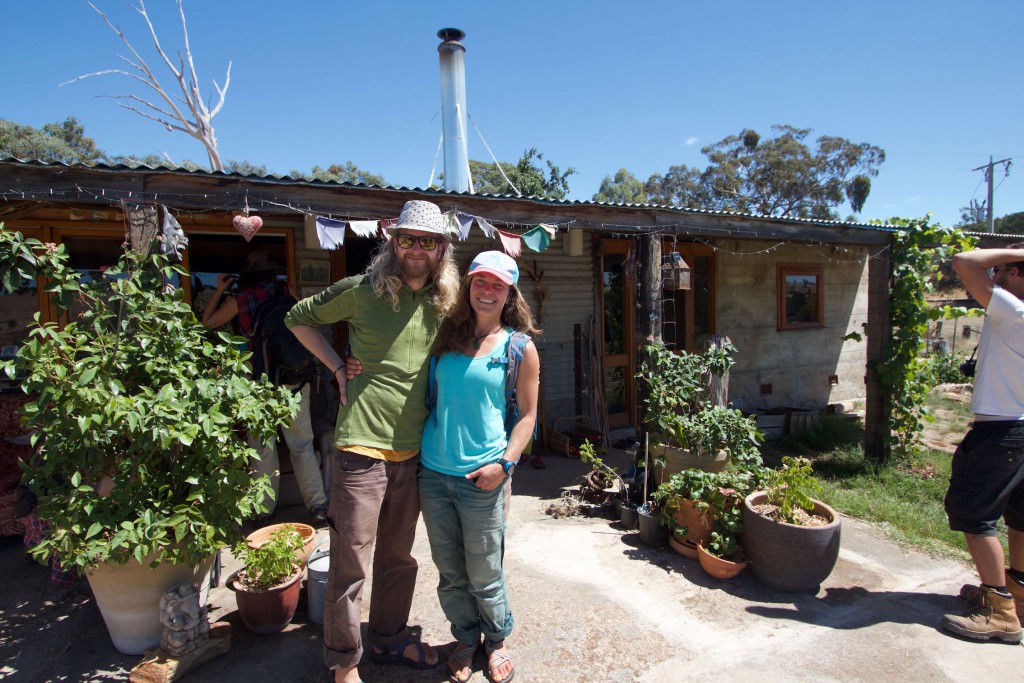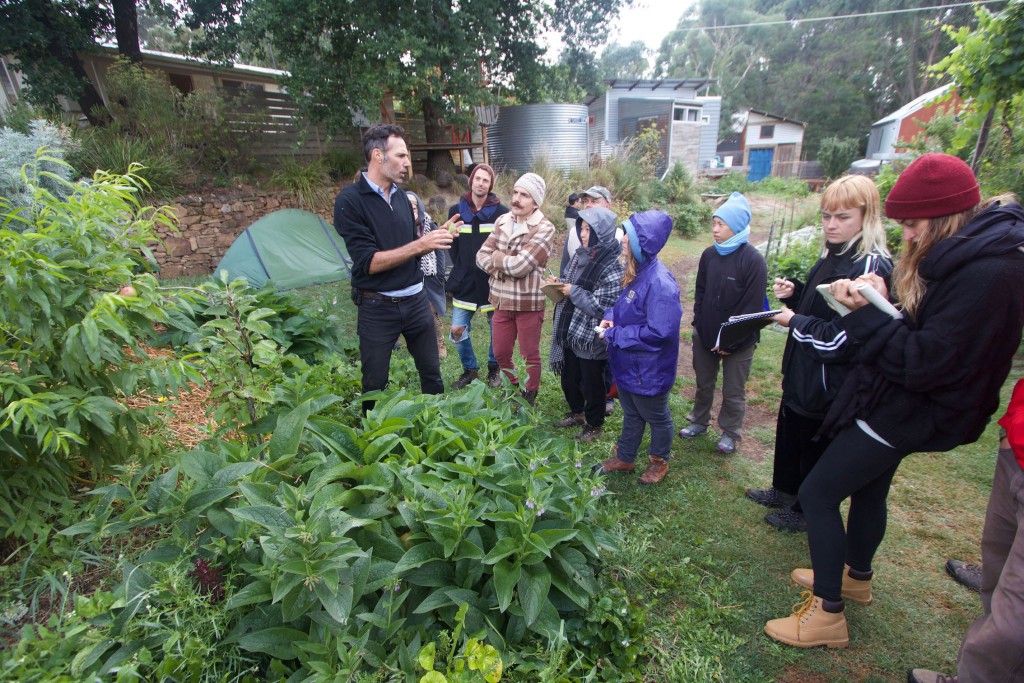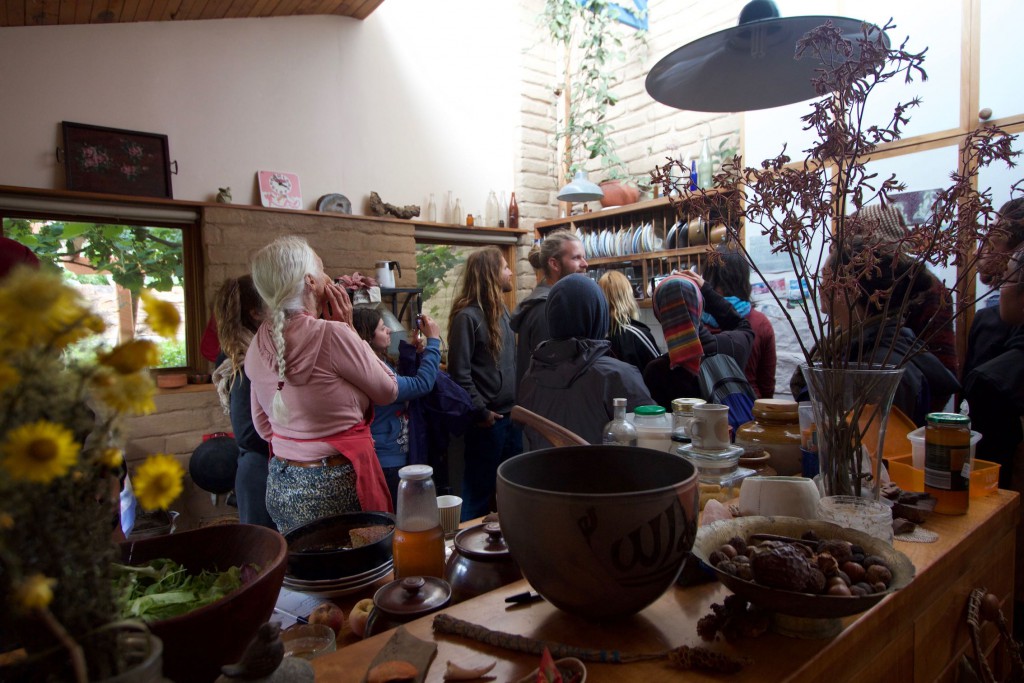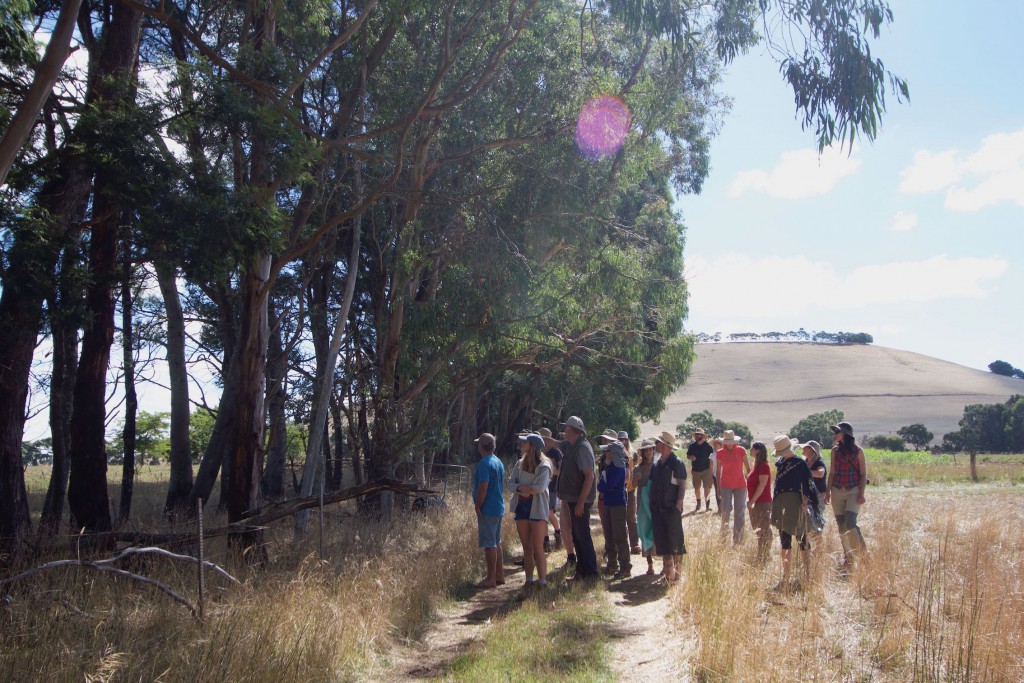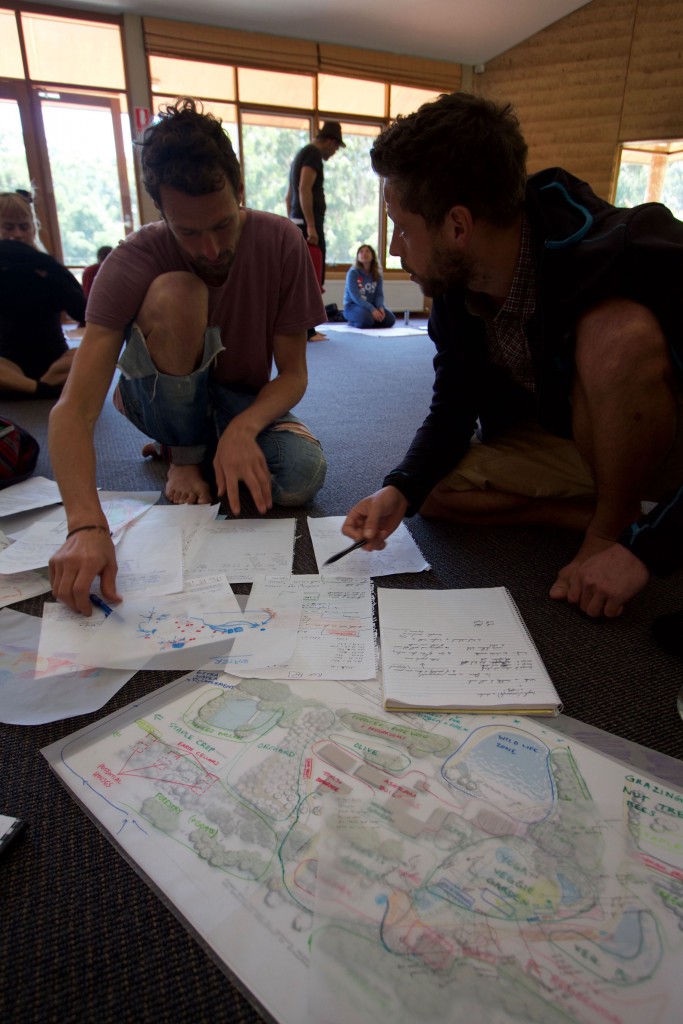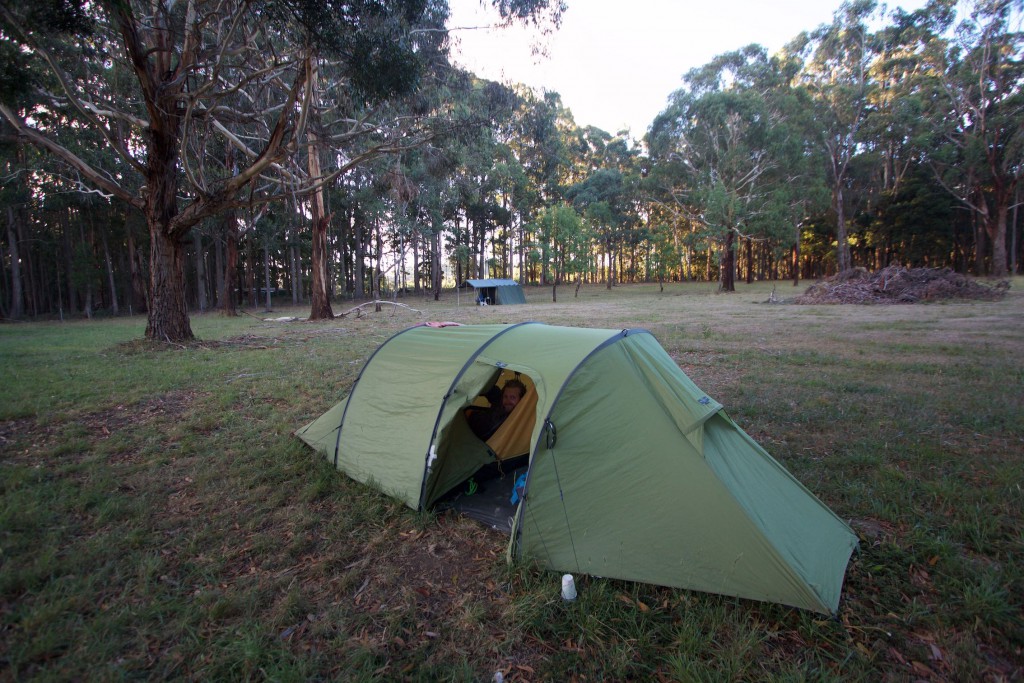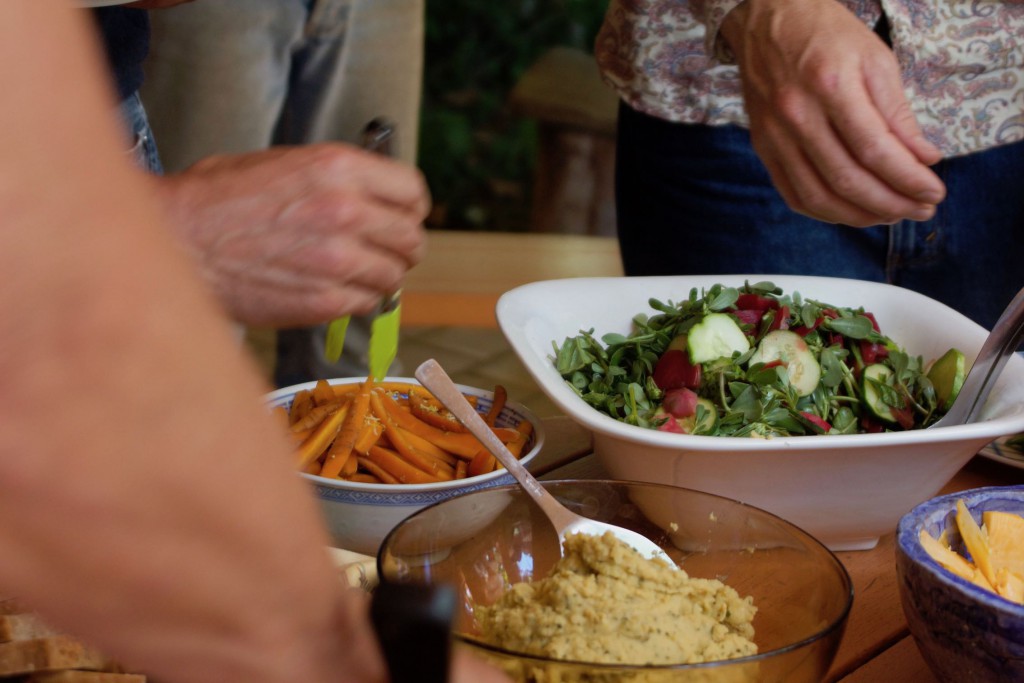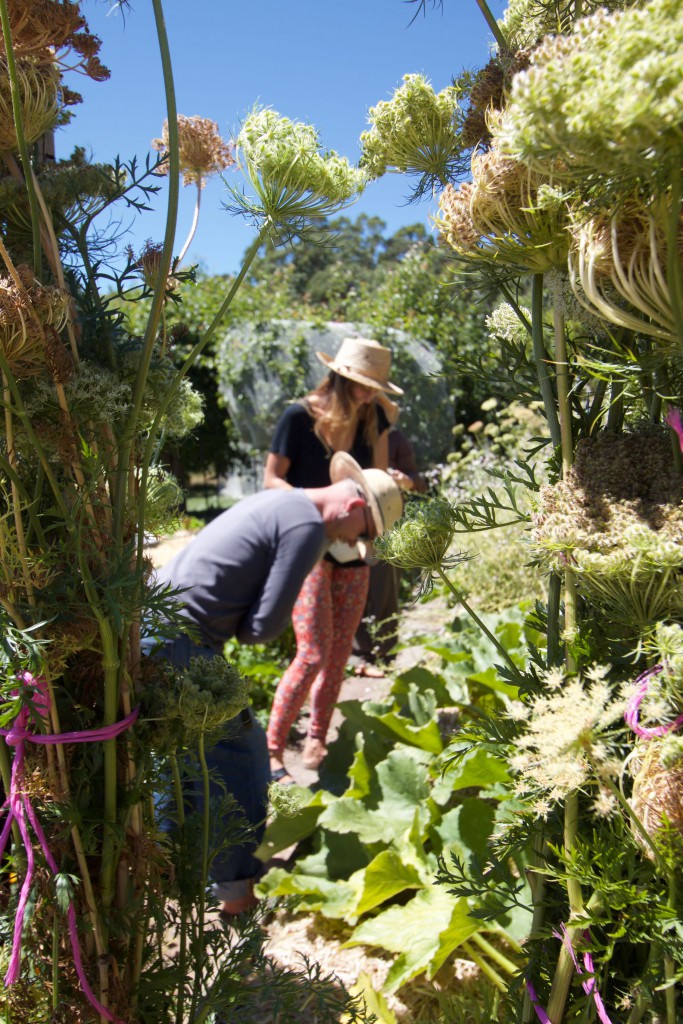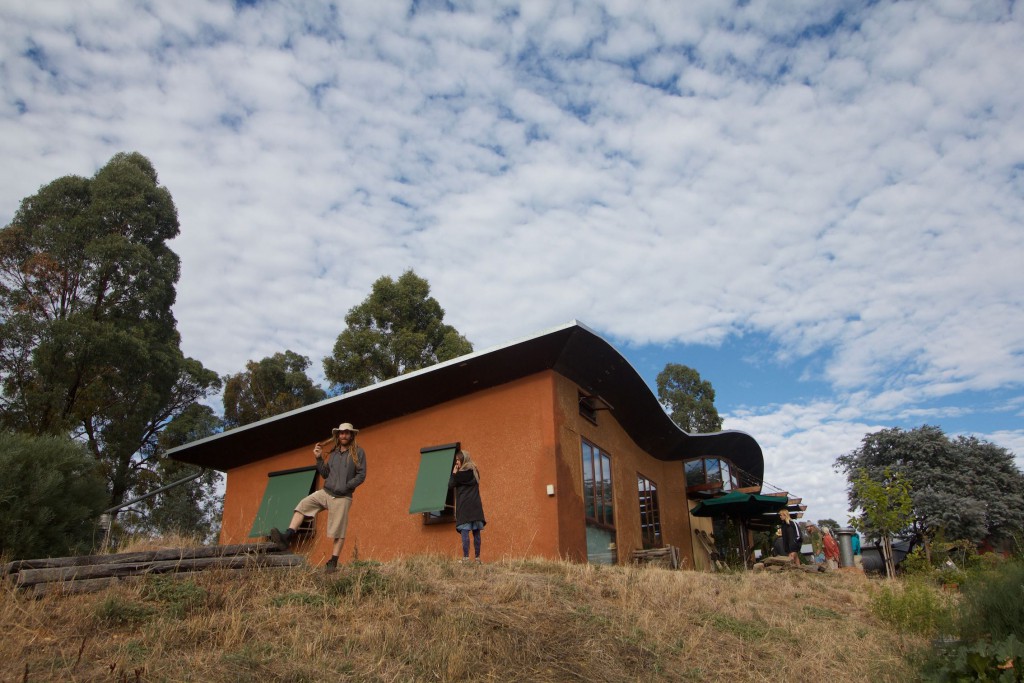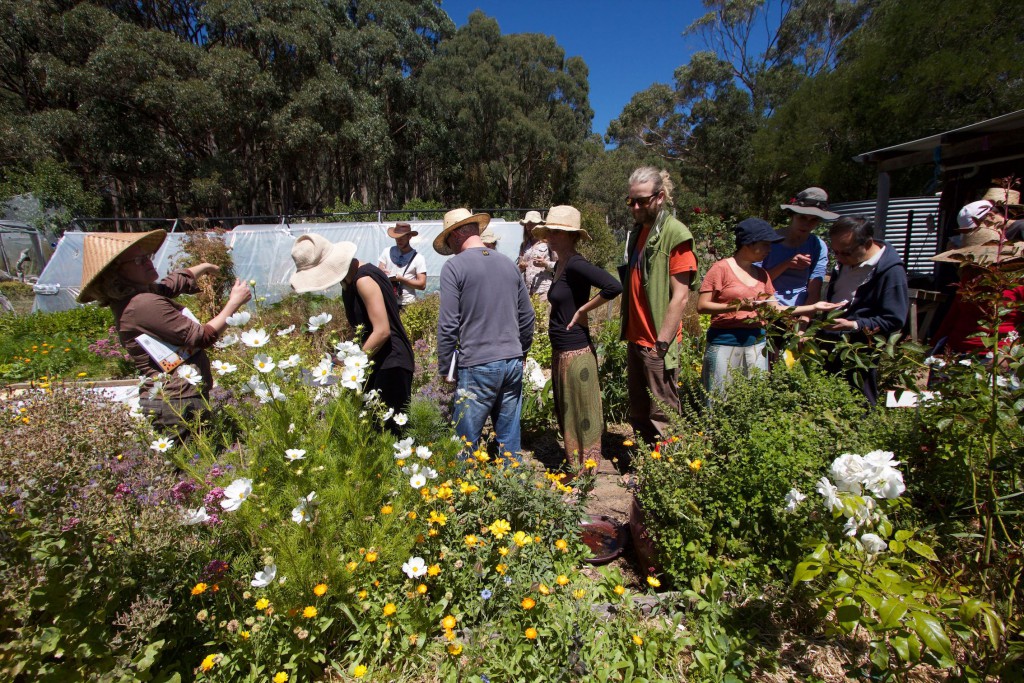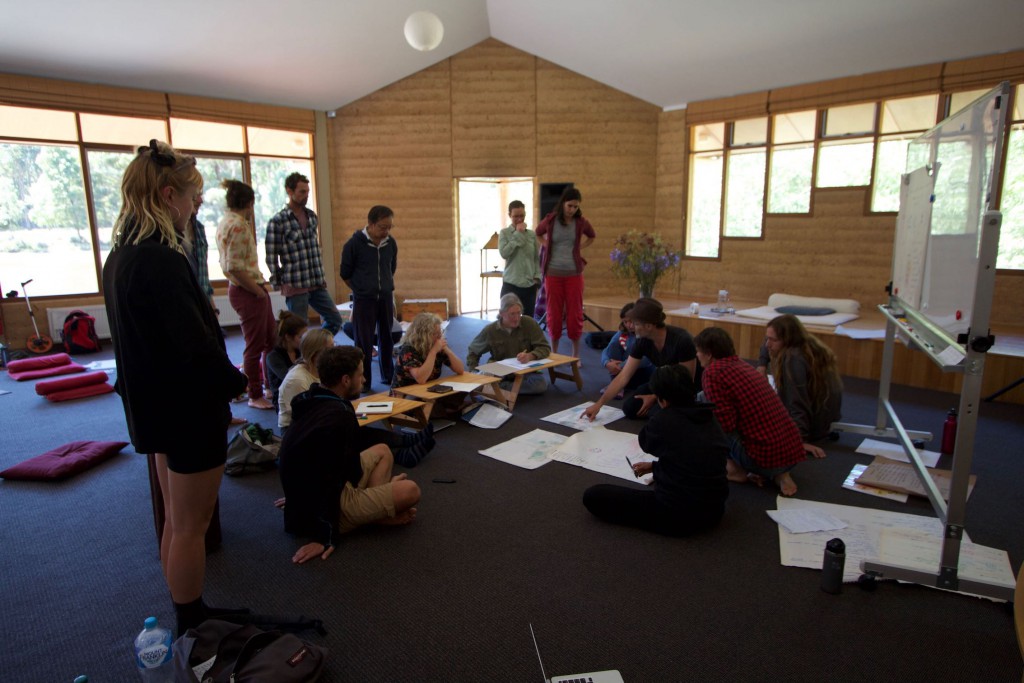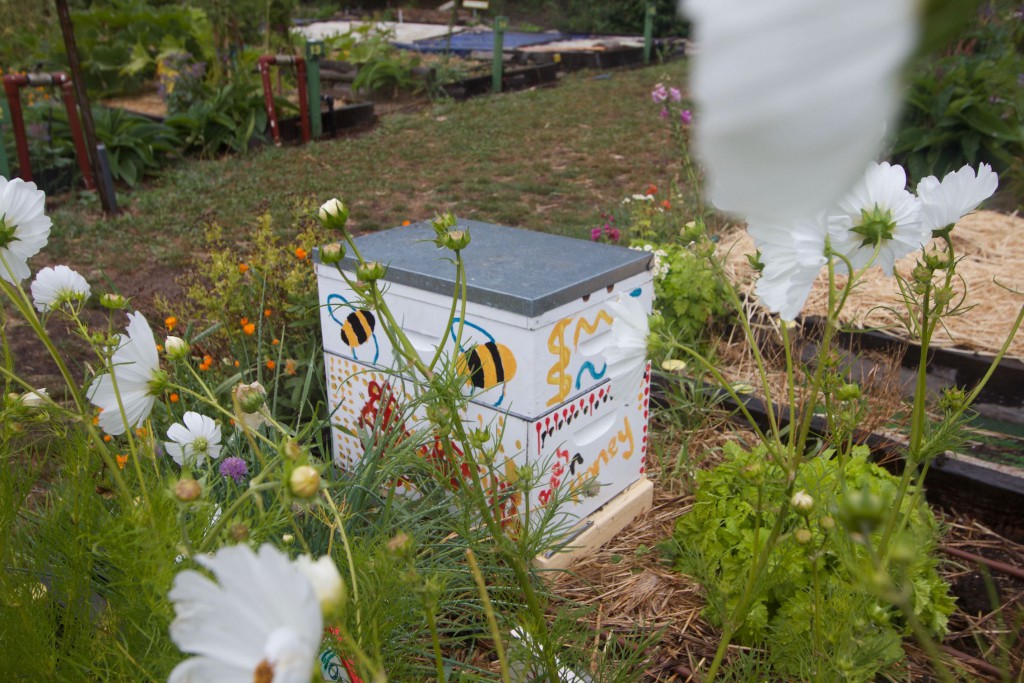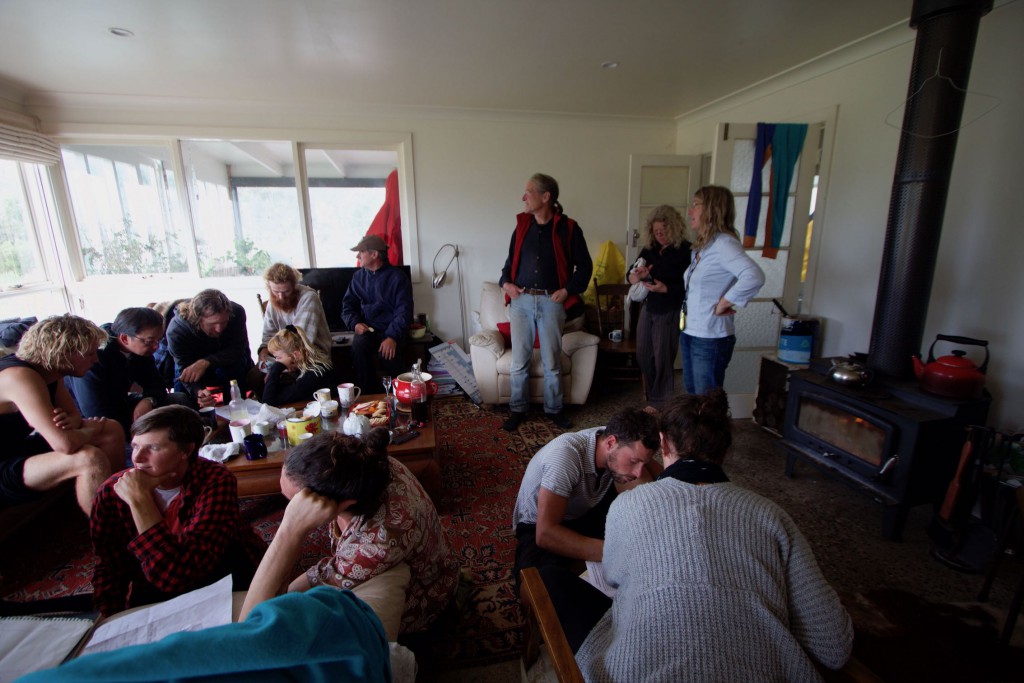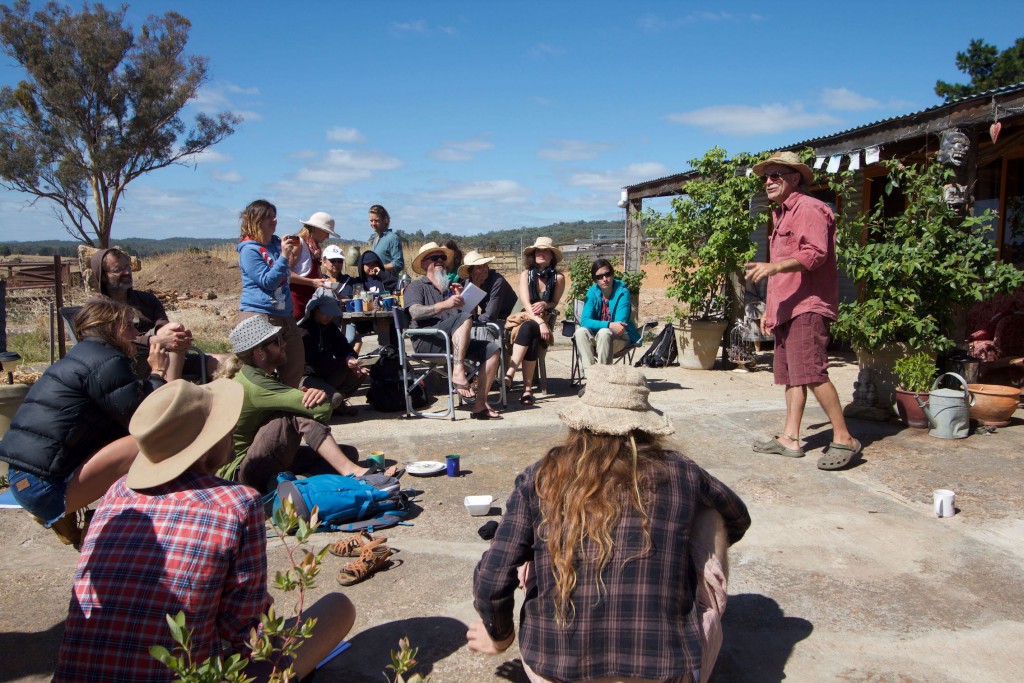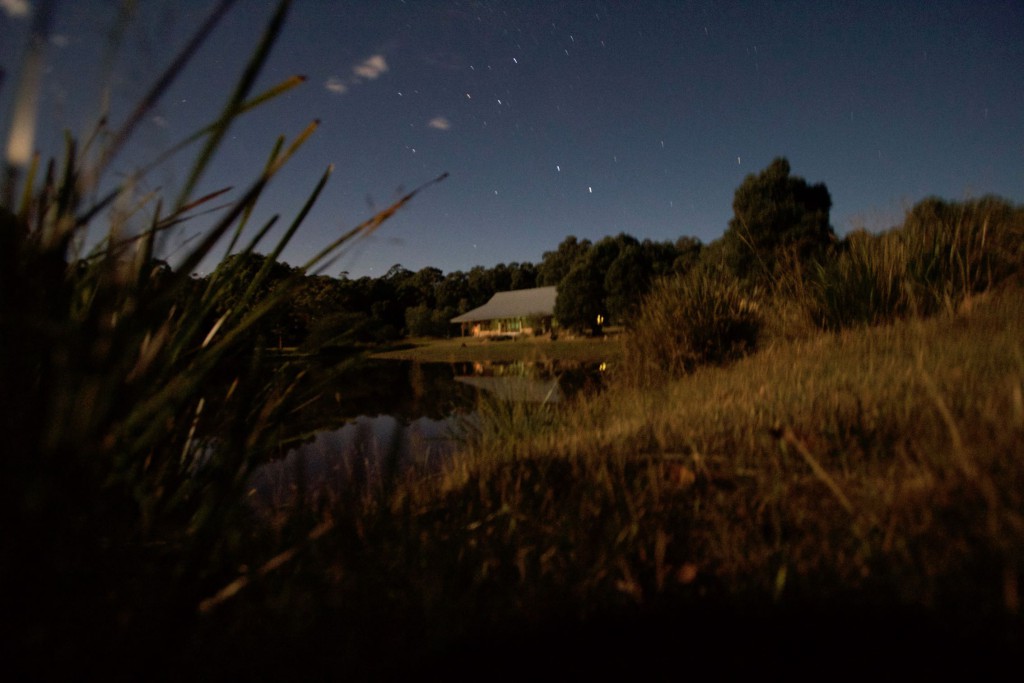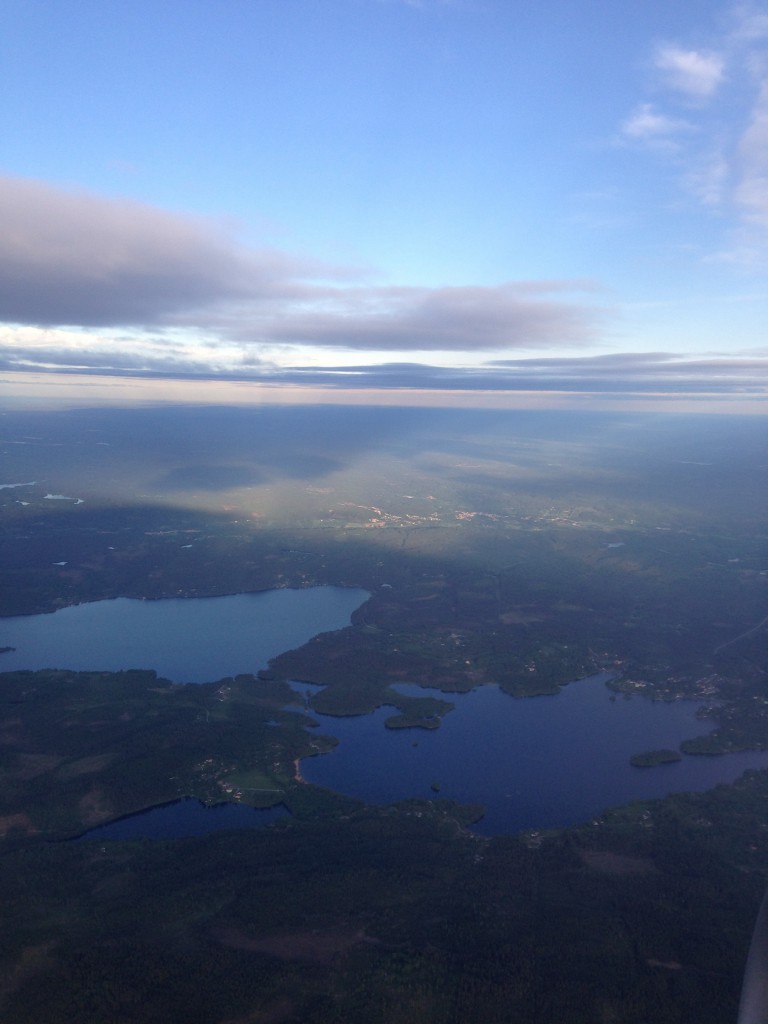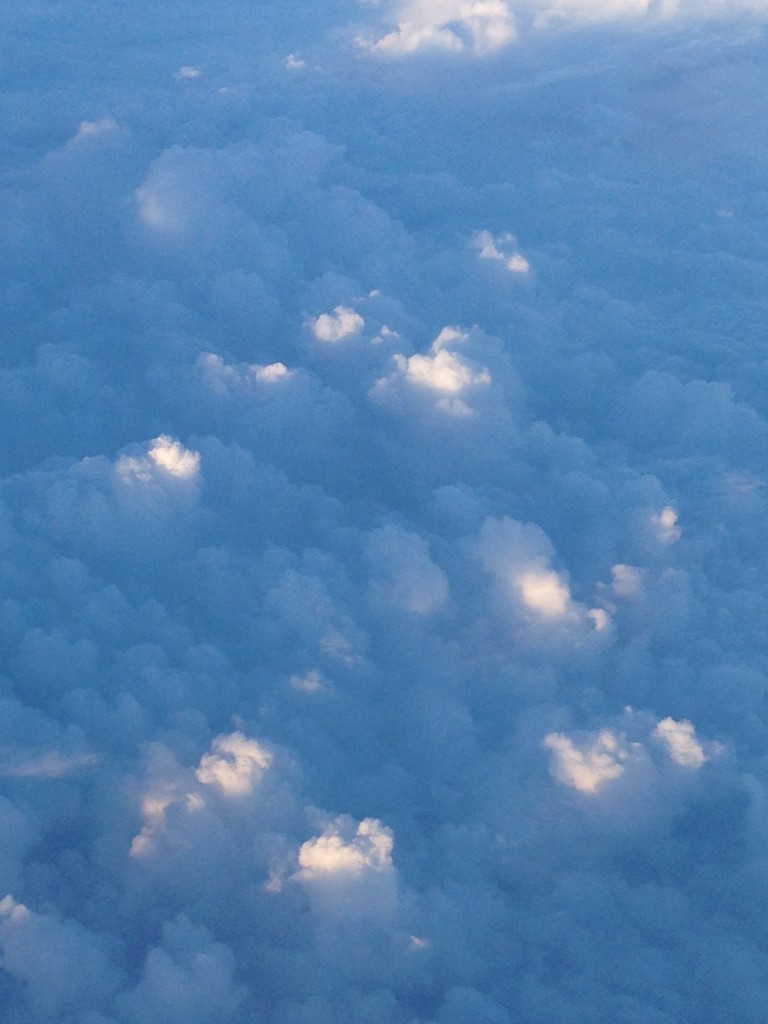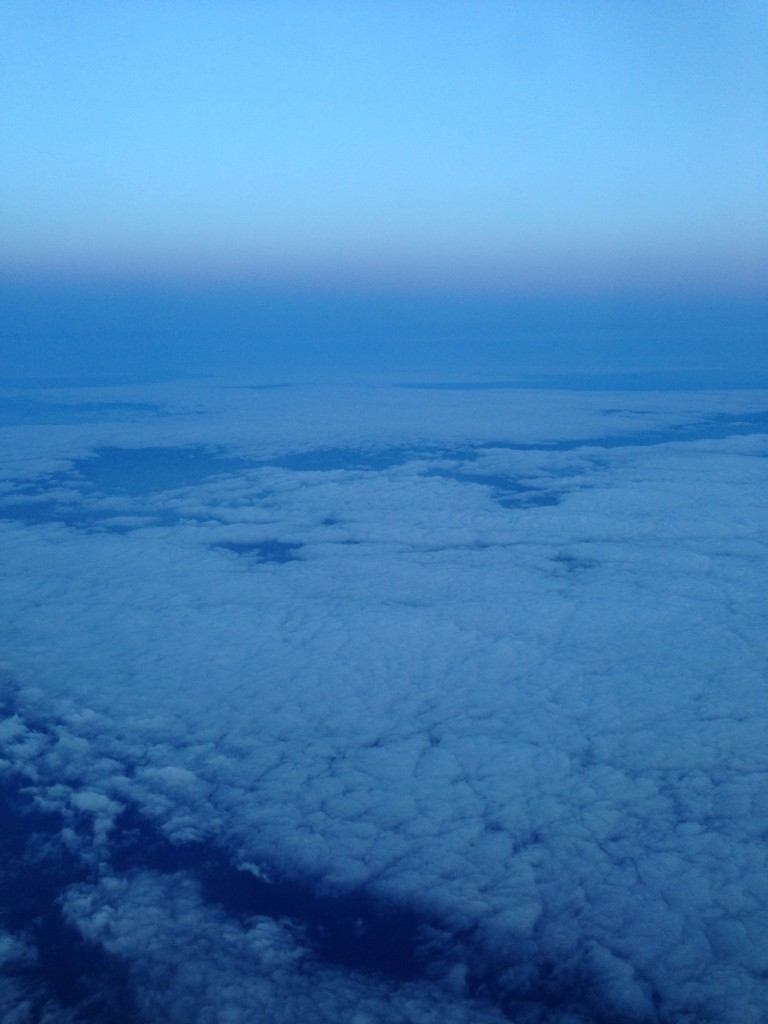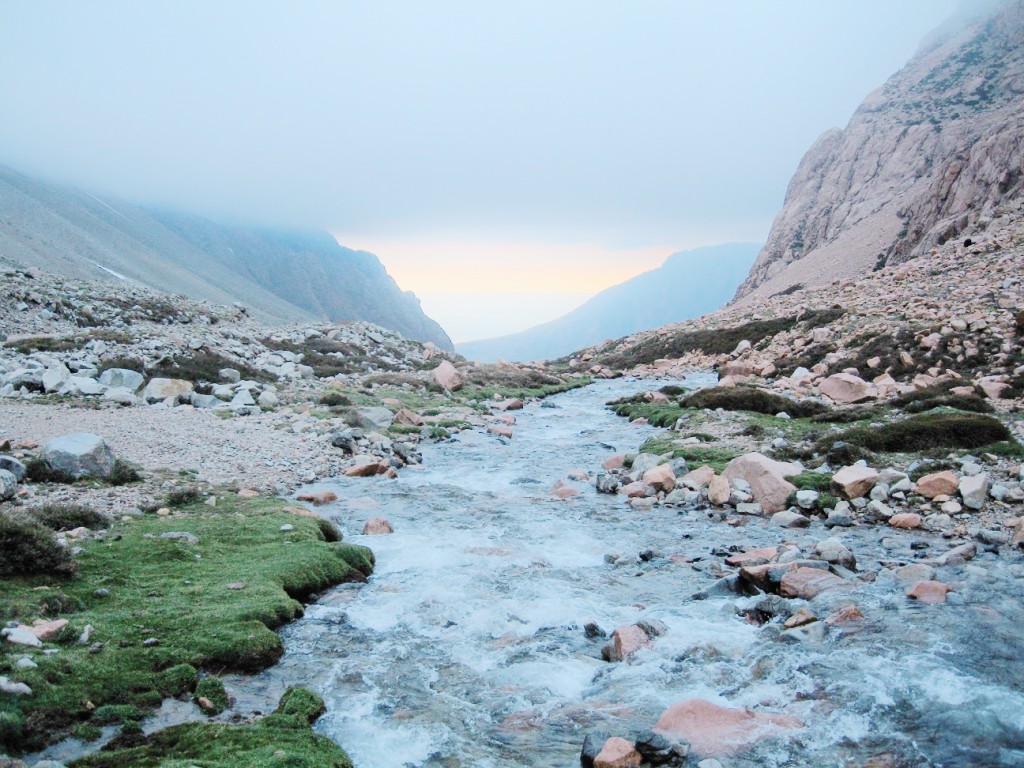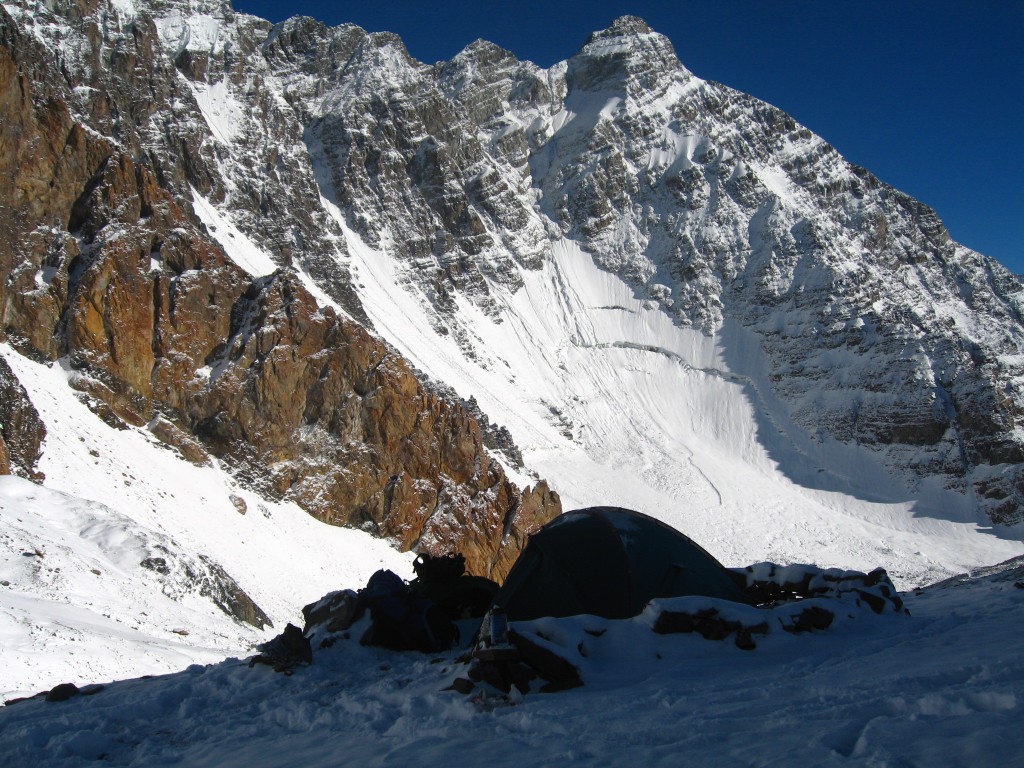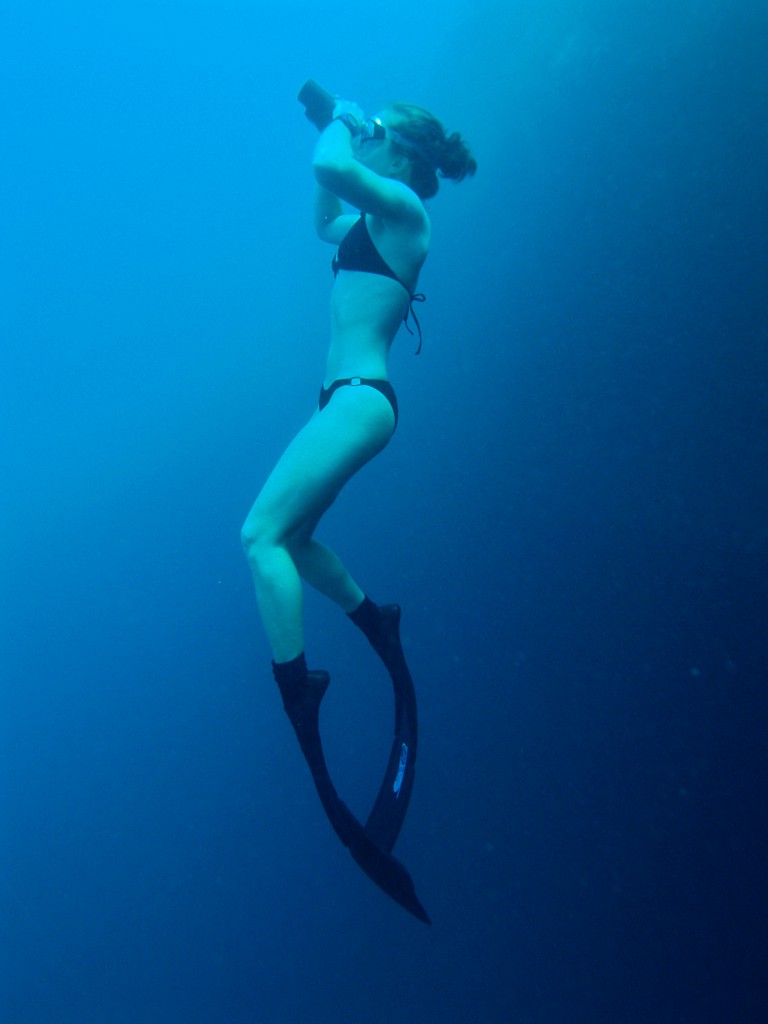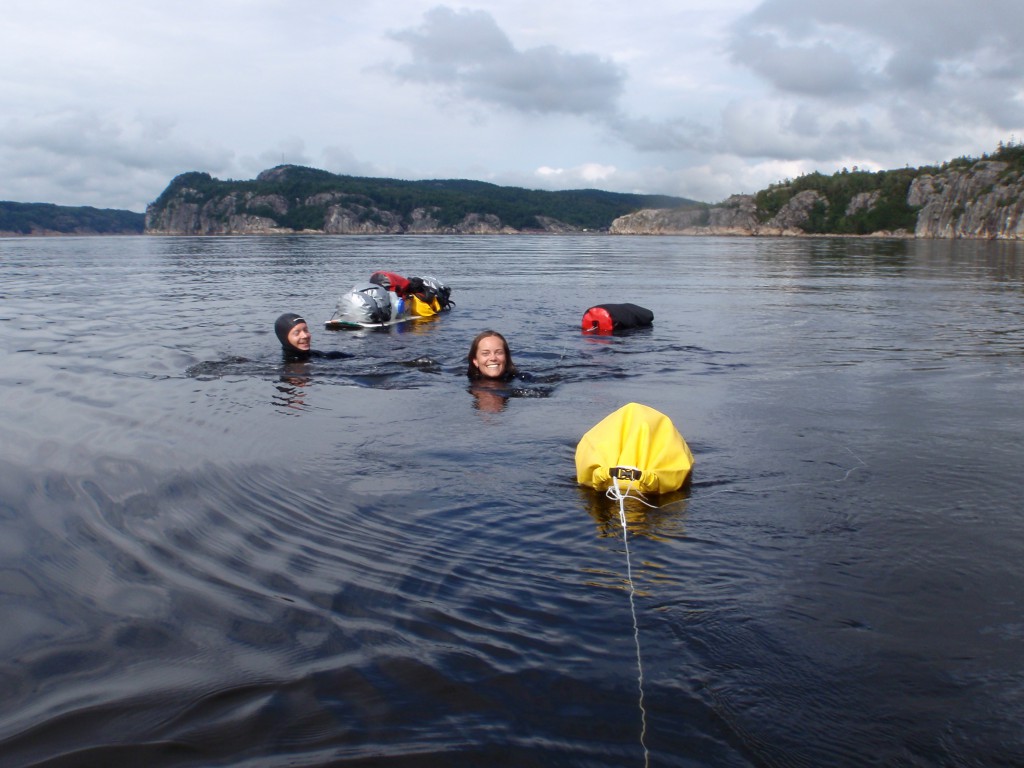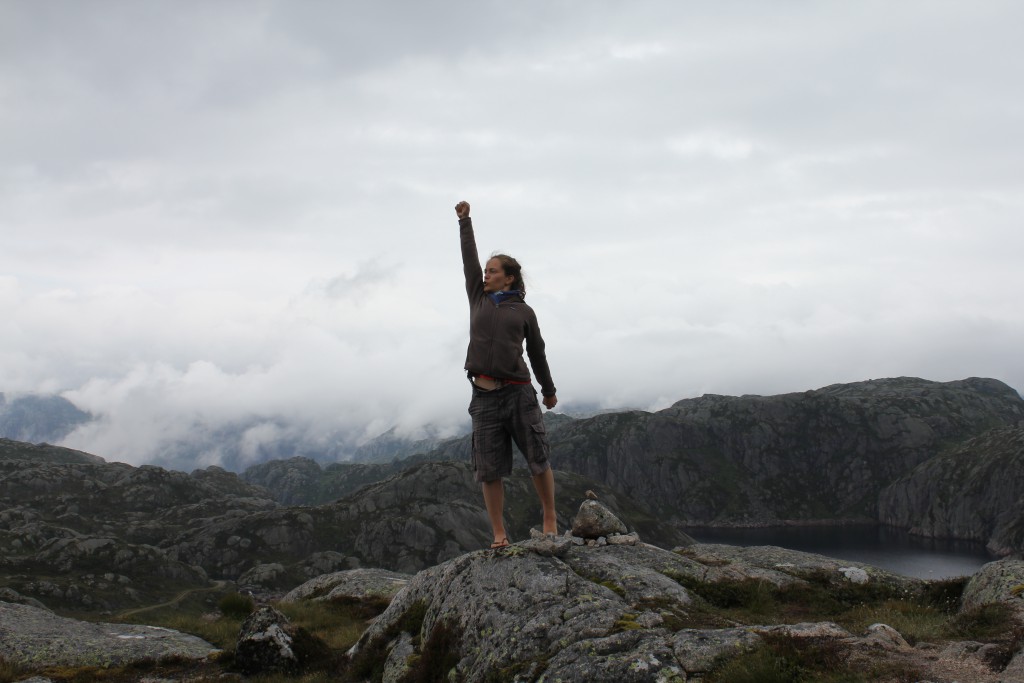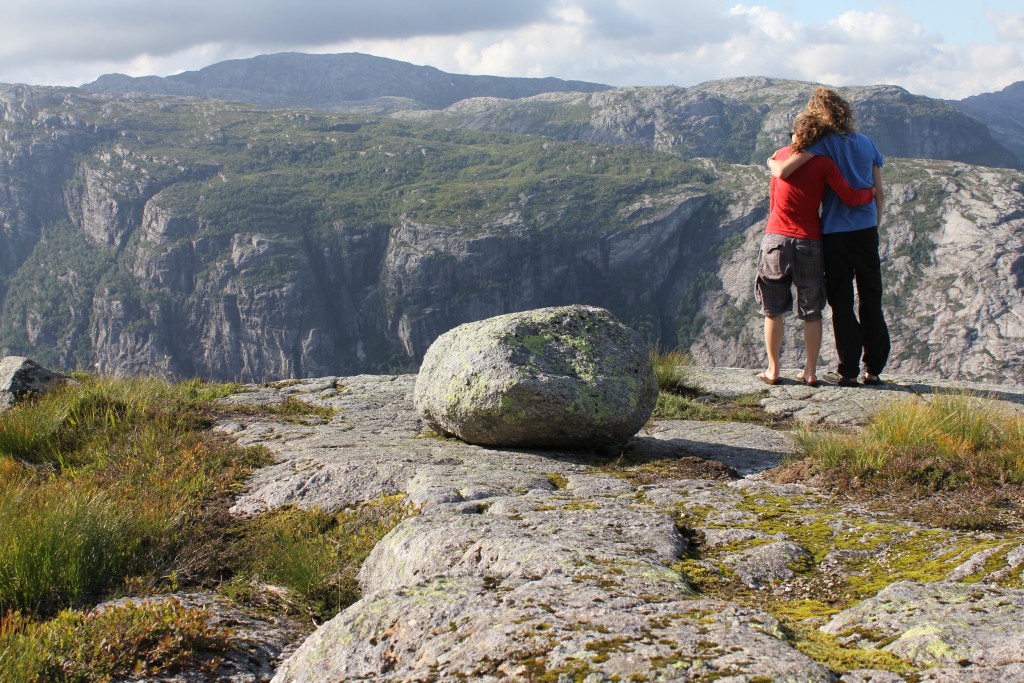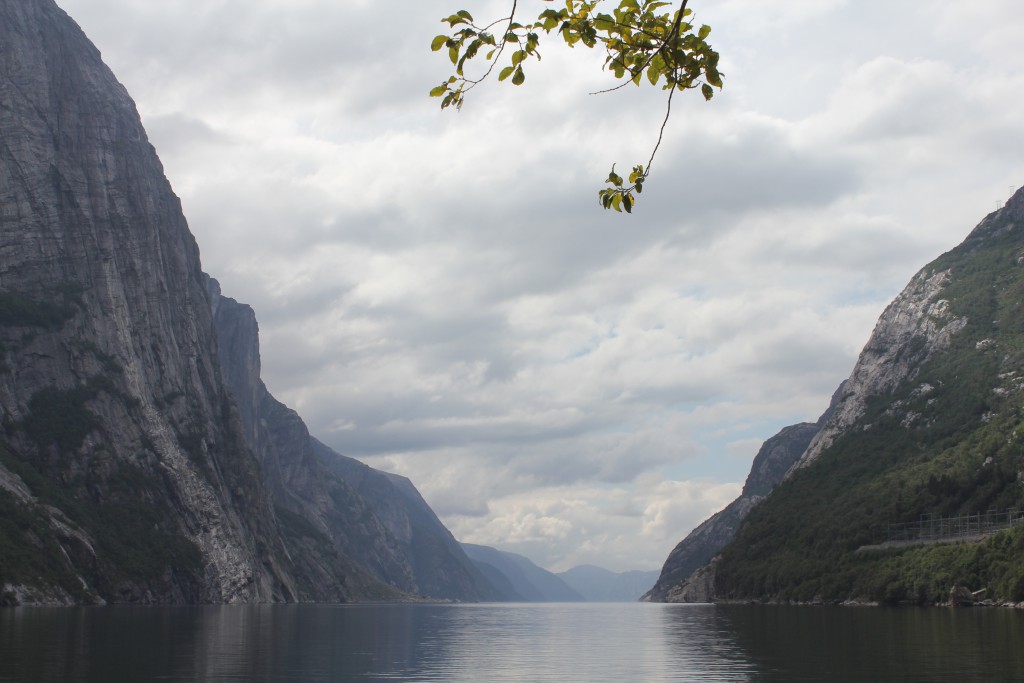I det här inlägget vill jag utgå från en presentation jag nyligen höll för nätverket och plattformen FoodShift.se. FoodShift arrangerade en träff i Göteborg med fokus på bioregionalism och regenerativa livsmedelssystem, och jag som länge grunnat på hur vi kan använda permakulturdesign för att arbeta regenerativt med matproduktion fick möjligheten att presentera tankar kring kopplingen mellan Market Gardening och permakultur.
Som ni märker är det en mängd olika begrepp jag just hänvisat till. I texten nedan kommer jag att fortsätta beröra dem, och mer utförlig information om hur de definieras och används går att finna via sökningar på webben. För mig är senhösten och vintern en tid för förkovran och att lära nytt, är du sugen på samma upplägg så hugg tag i dessa begrepp och grotta ner dig! Det finns både filmklipp och texter att ta del av.
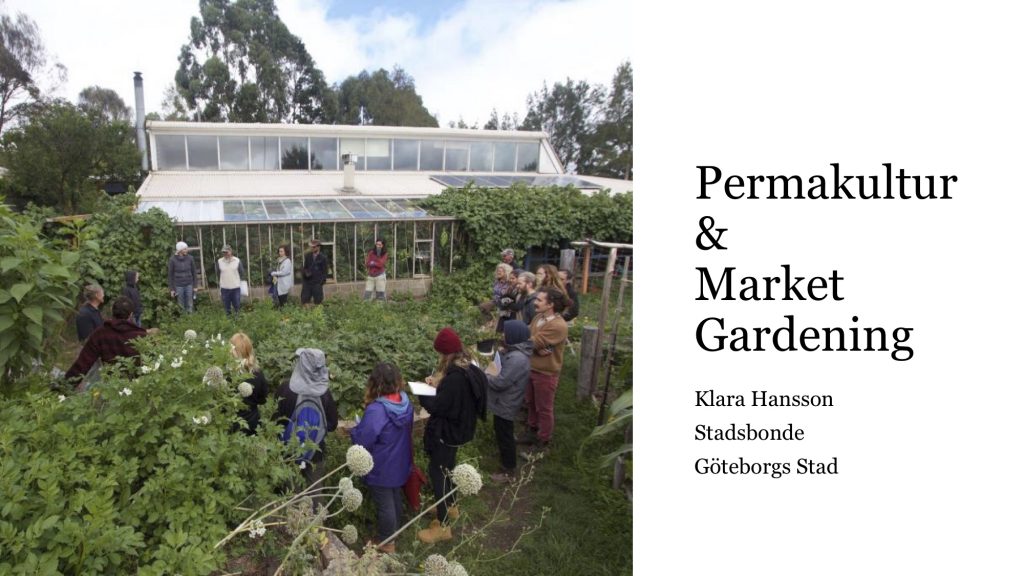
På bilden ovan står David Holmgren, medgrundare till konceptet permakultur, i sin köksträdgård framför sitt egenbyggda hus på gården Melliodora i Australien. Min man Tim och jag deltog år 2017 i en permakulturutbildning som var baserad i området kring Melliodora. Vi åkte på studiebesök till en mängd olika platser, verksamheter och gårdar som en del av kursen, och det följande året fortsatte vi att både besöka och arbeta på olika permakulturdesignade gårdar. Jag tog med mig många insikter kring hur ett funktionellt småbruk kan byggas upp och skötas, och det har i sin tur lett mig vidare till att fokusera på hur Market Gardening/småskalig grönsaksodling kan integreras i en permakulturdesign för ett småbruk, med syfte att öka framför allt den ekonomiska resiliensen. Om vi struntar i idealismen som ofta följer med tankar kring permakultur och istället fokuserar på hur vi ska skapa intäkter nog för att kunna leva på vårt småbruk och ha råda att betala räkningar mm, hur kan vi göra då? Hur går vi från att vara månskensbönder med ett externt jobb till att kunna försörja oss utifrån vår gård?
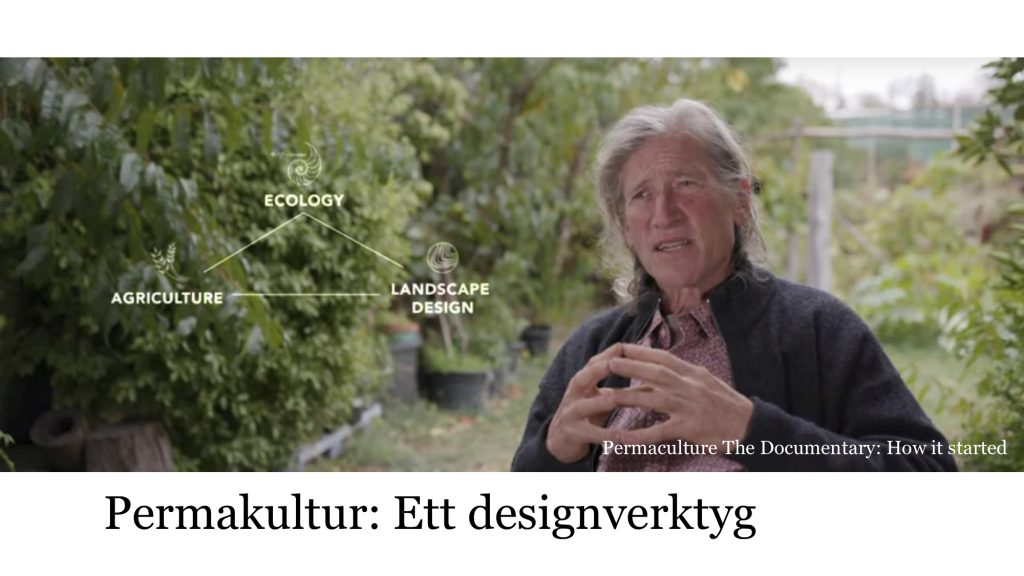
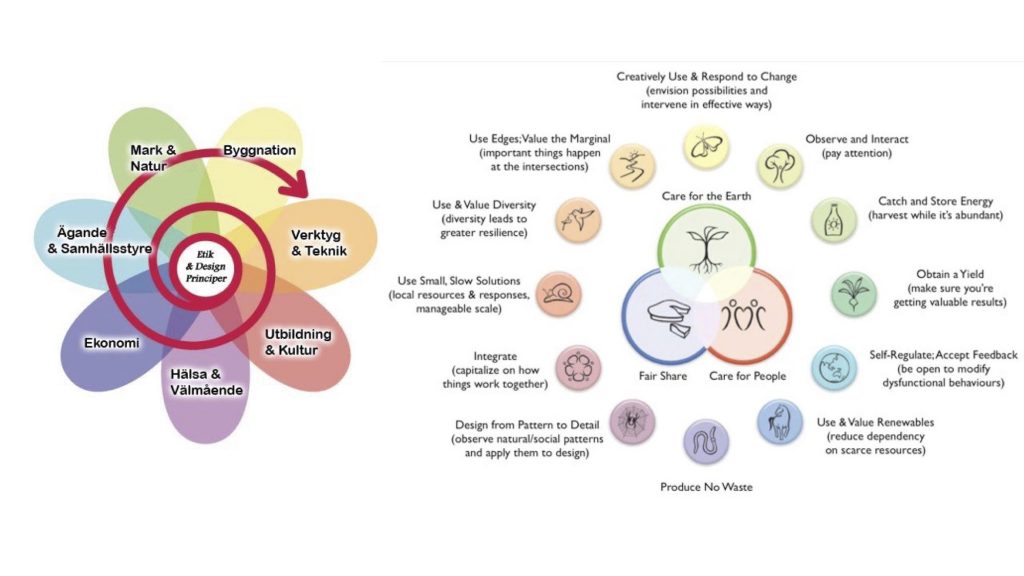
David förklarar att permakultur som koncept uppkom i skärningspunkten mellan ekologi, jordbruk och landskapsdesign. Ordet är en sammanslagning av permanent och agriculture -> permaculture. På de 40 år som gått sedan han och Bill Mollison skrev en första bok om permakultur så har begreppet vidgats från att fokusera på jordbruk till att omfamna hela den mänskliga kulturen, dvs permanent och culture -> permaculture. I blomman ovan syns alla de delar som samspelar för att vi ska kunna skapa en välmående mänsklig kultur som håller sig innanför de planetära gränserna. Till höger syns en modell för hur permakultur som koncept är uppbyggt utifrån etik och principer, fria från religiösa eller politiska kopplingar.
Grundbulten i permakultur är de tre etiska pelarna:
- Omsorg om jorden
- Omsorg om människan
- En rättvis fördelning av resurser
Etiken förankras genom ett antal principer, t ex “Skapa inget avfall”, “Använd små och långsamma lösningar”, “Fånga in och lagra energi”, “Använd och värdesätt förnybara tjänster och resurser” och “Lägg mönstret först, fyll i detaljerna sedan”.
För att komma igång med sin egen permakulturdesign kan man t ex använda sig av följande iterativa designprocess: OBREDIMET
- O: Observation av systemet du befinner dig i.
- B: Boundaries. Gränser för designen, t ex fastighetsgräns, tidsgräns, tillgängligt kapital, klimat.
- R: Resurser. Vad finns tillgängligt inom systemet? Lista alla resurser så att du synliggör dem.
- E: Evaluation. Utvärdera samspelet mellan de resurser som finns tillgängliga inom ditt avgränsade system, t ex personella resurser i förhållande till materiella och ekonomiska resurser i ett företag. Vad rör sig in i systemet och vad rör sig ut ur systemet?
- D: Design. Skapa en första design för hur resurserna på bästa vis kan samspela i det fysiska eller virtuella rummet.
- I: Implementation. Genomför din design!
- M: Maintenance. Underhåll systemet du håller på att omforma och bygga upp.
- E: Evaluation. Hur gick det? Blev det en funktionell utformning eller behöver något ändras?
- T: Tweak. Justera din design efter behov.
När du genomgått en första iteration av processen är du tillbaka vid observationsstadiet och kan påbörja nästa varv i designspiralen, eller hoppa runt mellan de olika stadierna för att göra uppdateringar och justeringar. Denna designprocess baserad på akronymet OBREDIMET hjälper dig att hålla koll på var i ditt arbete du befinner dig, använd det som ett dynamiskt hjälpverktyg snarare än en statisk processkarta.
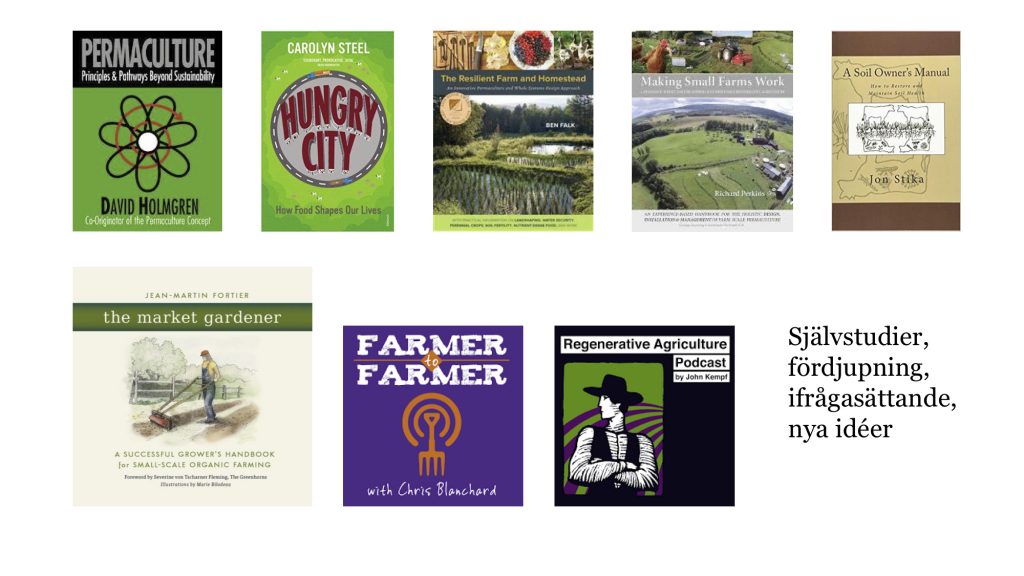
Sedan jag själv först läste ordet permakultur i en bok om byggekologi så har jag förkovrat mig rejält, både genom utbildningar, konferenser, lärarsamarbeten och självstudier. Ovan ser ni några av de böcker som varit avgörande för mitt tänkande, och även ett par podcasts vilka gett utrymme till att lyssna till en massa kloka bönder och forskare medan jag själv arbetat hands-on som odlare.
All denna fördjupning i det breda ämnet permakultur leder självklart till nya idéer och tankar om hur jag själv kan bidra till att skapa ett positivt fotavtryck på den här planeten. Jag tycker om att vara i naturen och har därför valt att fokusera på ämnet mat och odling, vilket har lett mig vidare till självstudier inom bl a regenerativt jordbruk och Market Gardening.
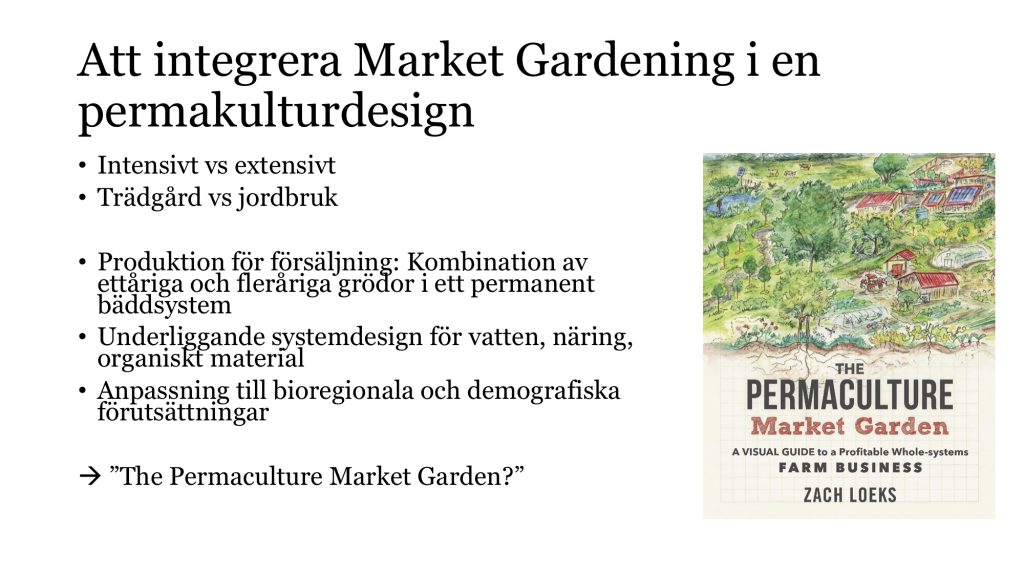
Själva idén om ett permakultursamhälle är attraktiv för många, vi kan lite suddigt se oss själva leva i ett fint samspel med naturen i en nutida Edens lustgård. Men när det kommer till kritan så finns det väldigt många tänkare i förhållande till görare. Jag vill uppmuntra fler till att faktiskt sätta igång praktiskt med permakultur, och en instegsmodell är att integrera grönsaksodling enligt modellen för en Market Garden i din permakulturdesign. Då uppstår möjligheten att bygga upp ditt eget odlarföretag där du i första skedet fokuserar på snabba, ettåriga växter för att sedan över tid kunna integrera fler och fler perenna grödor och på så vis etablera ett människoinkluderande ekosystem som tillgodoser våra behov av mat, fibrer, timmer, medicin etc samtidigt som andra organismer också får ett självklart livsutrymme.
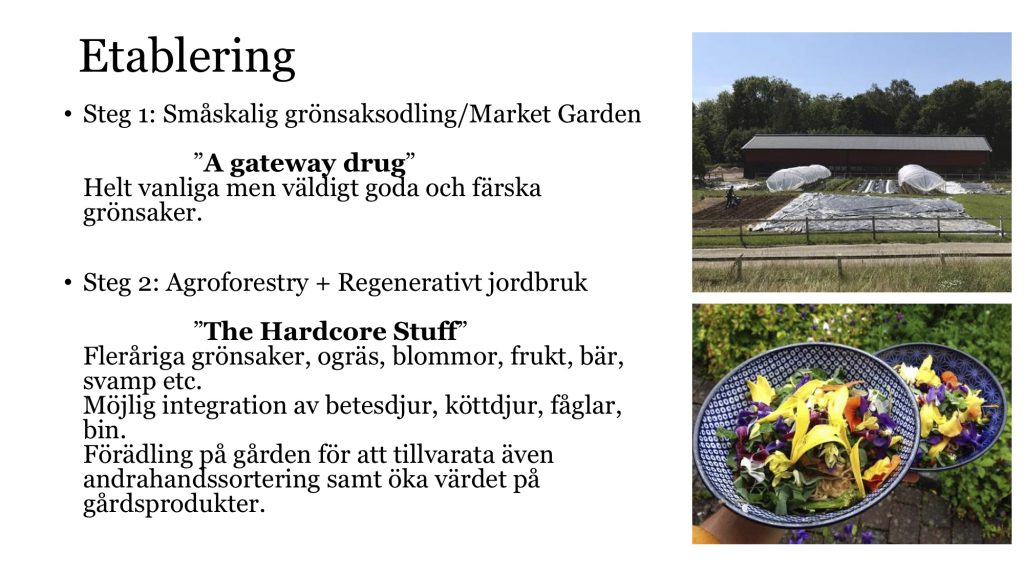
En Market Garden är en biointensiv grönsaksodling uppbyggd med permanenta bäddar, där hög input leder till hög output. Effektiv och tydlig planering samt införsel av kompost, fröer, vatten mm leder till höga grönsaksskördar och intäkter därefter. Du arbetar med den mänskliga skalan, använder mycket handkraft och enkla redskap istället för att fokusera på större traktorer och större areal. En Market Garden kan t ex etableras på 1000 kvadratmeter och sedan över tid – om möjlighet till utökning finns – växa sig större.
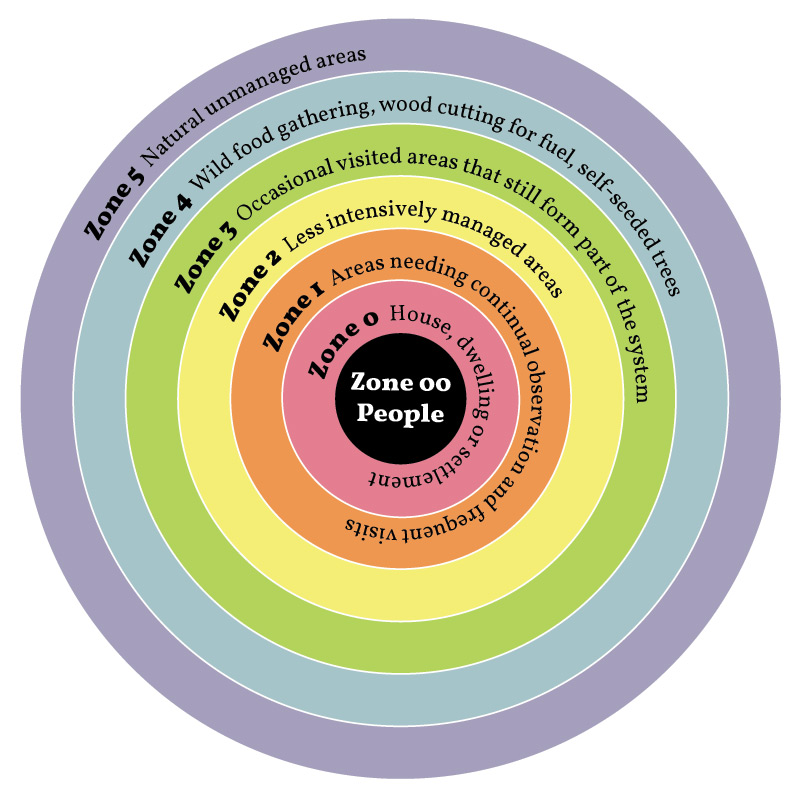
I en permakulturdesign ser jag en Market Garden placerad i zon 1-2. I takt med att du etablerat denna grönsaksodling och fått bra snurr på dess skötsel så har du möjlighet att tack vare observationerna du hunnit göra utveckla din design för zon 3-4. Då kan de permanenta bäddarna i zon 1-2 användas som en del i ett mönster för inkluderingen av fleråriga grödor i zon 3-4 där anläggning, skötsel och skörd förenklas tack vare den tydliga bäddstrukturen.
Din Market Garden kan svälla till att bli en Permaculture Market Garden som spänner över ett helt ekosystem.
Det jag föreslår här är ingen enkel quick fix för att etablera permakulturdesignade platser, men det är en möjlig väg framåt. Att arbeta med grönsaksodling är stundtals ett tungt och slitigt arbete där du ska uppfylla entreprenörens samtliga roller under osäkra löneförhållanden. Det kan också vara det bästa som har hänt dig i ditt yrkesliv! Ett arbete i samklang med årstiderna, till stora delar förlagt utomhus med en hög grad av självbestämmande, en stor utvecklingspotential tillsammans med driftiga samarbetspartners och en ständigt tillgång till högklassiga livsmedel, c’est pas mal.
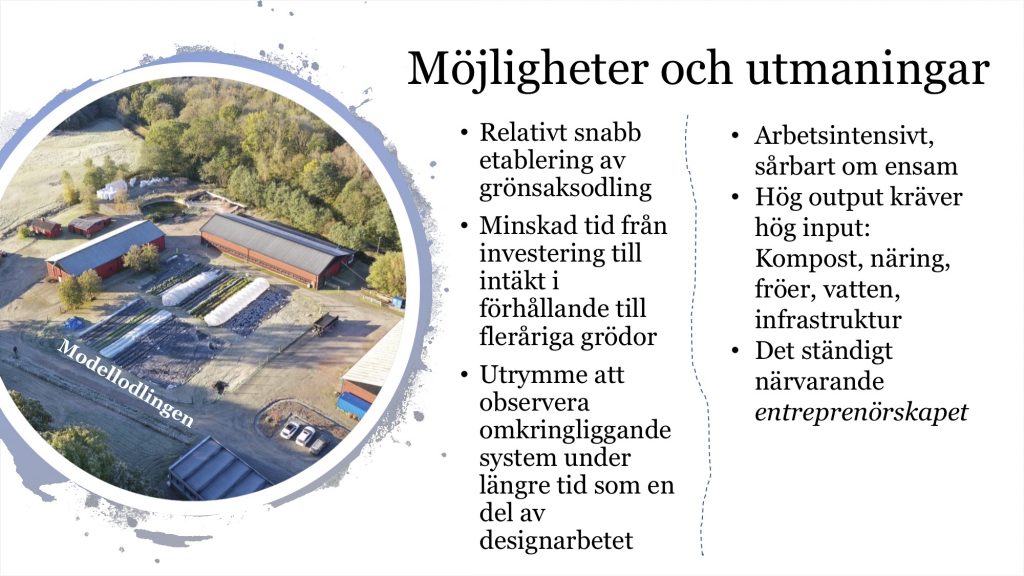
Det här inlägget hoppas jag inspirerar dig att leta efter mer kunskap och att bygga fler egna erfarenheter kring alla dessa begrepp som jag nämnt. I en värld som kan tyckas orolig och instabil är det givande att se till konkreta positiva åtgärder vilka är möjliga att genomföra i nutid. Vi är många som gemensamt arbetar med detta omställningsarbete, och även om vi är så små att vi till vardags inte syns i mediebruset så existerar vi, det gäller bara att hitta vägar in i detta mångfacetterade starka nätverk av tänkar-görare! Välkommen du med, alla kan göra skillnad.
Klara

